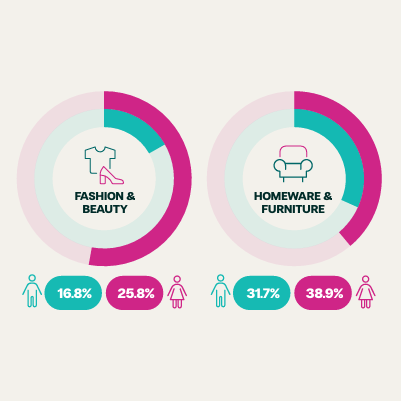How can merchants communicate trust at the checkout?

In our previous article (Merchants must adapt to BNPL and the changing nature of retail finance.) we explained how retailers that provide a broader suite of credit products are better placed to meet the needs of their customers and enable more sales. But adding BNPL is not without risks, most notably around trust, at a point where for consumers it matters most.
Shoppers are increasingly savvy in searching for the best deals, but also wary of financial risks, scams and fraud. The point of transaction represents a moment of heightened vigilance. Considerations of trust and security matter just as much (if not more) as speed and convenience at the checkout. Research has found that consumers value security higher than speed and choice of payment method.
One key question for merchants is who do their customers trust their security with more; their brand, or that of a third party providing the credit to make the purchase?
In part, that depends on what type of credit is being offered. An independent BNPL provider may be perceived to have lower security credentials than an established credit card provider or bank, both at the point of checkout and subsequent protections of money and data. A customer who is handed off to one of these providers midway through their transaction, or asked to share their data with them, may become jittery and walk away from the purchase.
Yet as we read in our previous article, merchants cannot afford to ignore BNPL. The demand for it amongst all ages and affluence groups is increasing. So how do they reconcile the risk with the opportunity and provide consumers with a reassuring checkout experience?
Trust by design
If trust at the checkout can make or break a sale, and a merchant considers their brand to be trusted by their customers, then they must design a checkout journey that engenders that trust.
Familiarity is what counts. Some merchants have discovered the optimal way to achieve this is by embedding the BNPL application process within their site, so that their logo, their tone of voice and their colour palette remain front and centre throughout. Better still if they can achieve this without having to use a different URL, while reinforcing secure browsing and data security protocols.
If a merchant’s lending partner is trusted and familiar, then they may benefit from co-branding at key points of the journey. At a minimum, and to be compliant, they’ll need to ensure the customer has full transparency of who will be providing their loan, and how their data will be shared.
Additional techniques to improve trust and conversion include reinforcement of security provisions, “social proofing” messages on the number of other users who have successfully taken this route, a clear explanation of repayment terms, and full contact details for lender customer support.
Shrewd merchants also understand that by hosting the BNPL journey they have visibility of the data about their customers’ experience, and with that the opportunity to test, learn and optimise conversion success. What’s more, this data can become a treasure trove of insights that can be used to personalise further up the purchase journey, as well as for ongoing loyalty. So by owning these insights, and controlling what each customer sees, merchants create a new communications and marketing channel, which they can use to generate more sales or build further trust.
Trust that lasts
This all points to the need for merchants to balance their desire to offer BNPL as soon as possible with selecting the ‘right’ lenders and journeys; those that value trust at the checkout as much as they do. ‘Plug and play’ providers may get a merchant to market faster, but if they insist (by design or product limitation) that a customer is redirected to them to complete an application, there may be long term negative consequences, most notably the loss of customer data and so the inability to learn and optimise the journey, and the impact of sharing the customer relationship.
It can be tempting to consider the question of trust at the checkout as a defensive strategy; what to do to ensure you don’t lose a customer. But merchants should also think proactively about this. With one survey suggesting that 39% of customers admit to a lack of understanding of how BNPL products work, merchants should take it upon themselves to fill that knowledge gap. In other words, the BNPL checkout experience is an opportunity to leverage trust as a point of competitive advantage, and so use it to attract new customers, reassure existing ones, and generate more sales from a position of trust.
In the next article in this series, we will explore how merchants can take trust beyond the point of transaction to drive long-term customer loyalty and lifetime value.
Divido’s whitelabel retail finance platform helps merchant’s take back control of their brand experience and customer journey. Our award winning technology is powering the retail finance programs for some of the world’s leading retailers.
Keen to know more?








